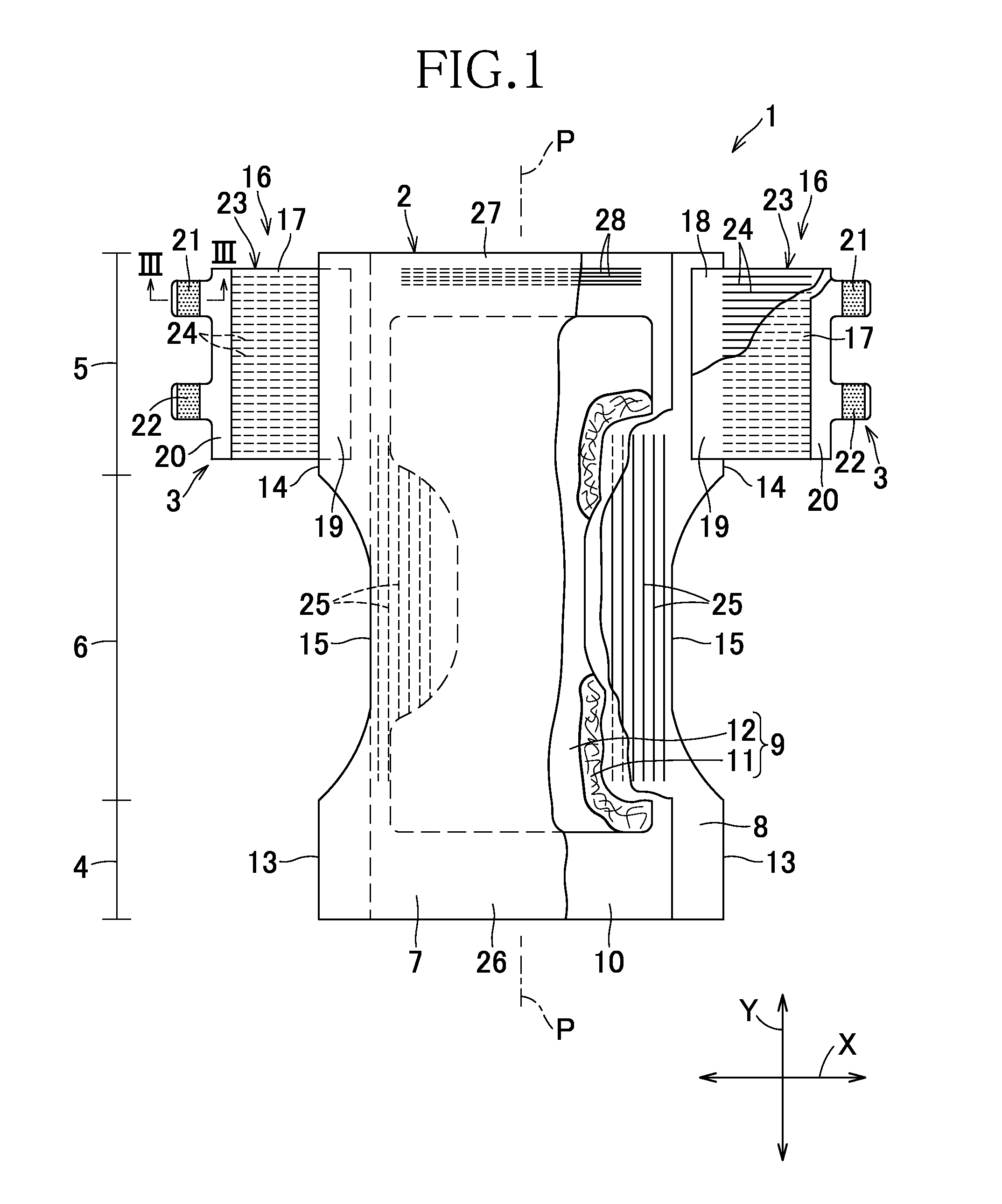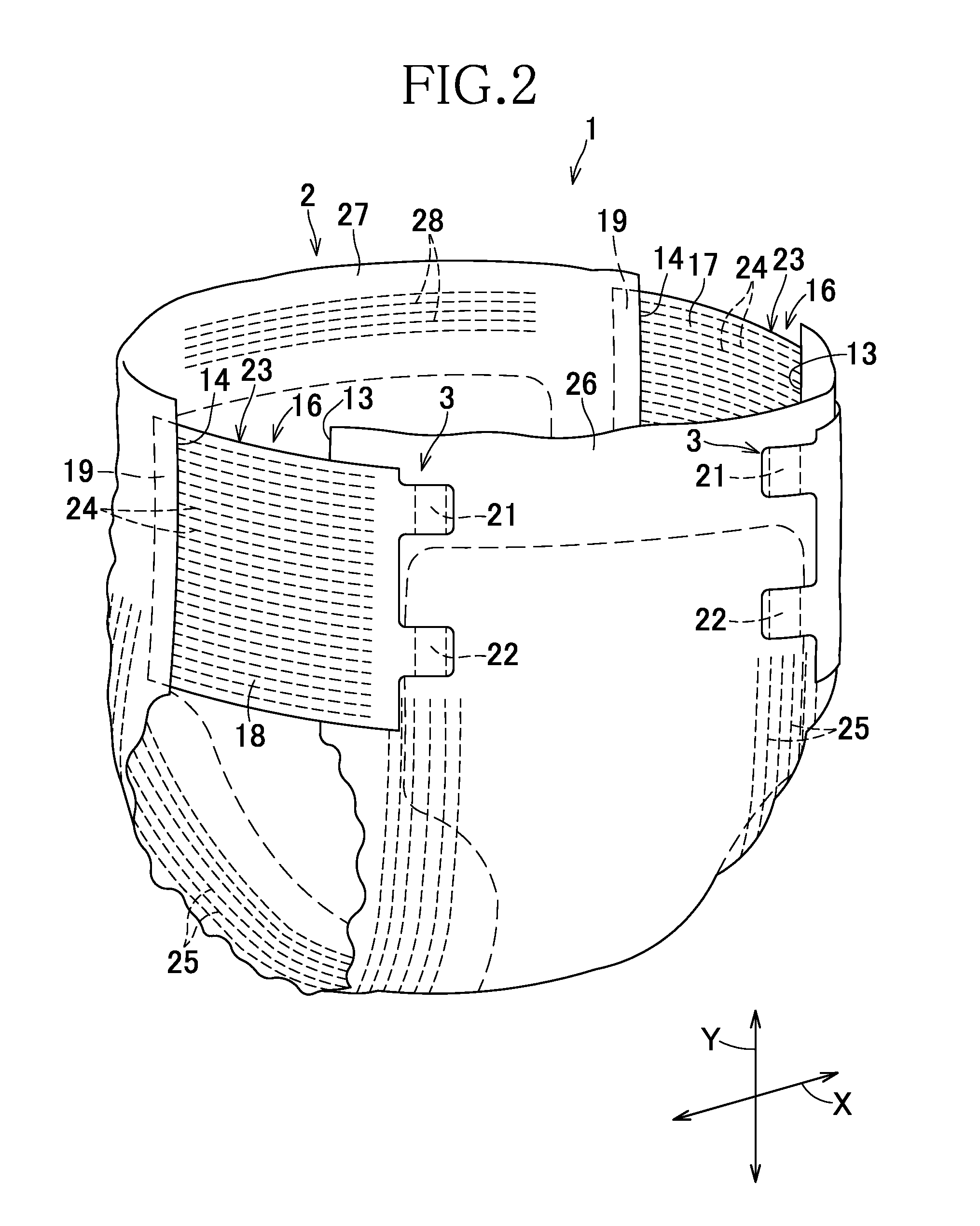Wearing article
a technology of articles and diapers, applied in the field of wearing articles, can solve the problems of inability to produce offensive sound, and achieve the effects of reducing manufacturing costs, reducing tensile force, and minimizing sound generated in the course of diapering or exchanging diapers
- Summary
- Abstract
- Description
- Claims
- Application Information
AI Technical Summary
Benefits of technology
Problems solved by technology
Method used
Image
Examples
first embodiment
[0044]FIGS. 1 through 4 illustrate the first embodiment of the present invention. FIG. 1 is a plan view showing so-called open-type disposable diaper as partially cutaway for convenience of illustration. The diaper 1 comprises a liquid-absorbent chassis 2 and fastening means 3 attached to the chassis 2. The chassis 2 has front and rear waist regions 4, 5 and a crotch region 6 extending between these front and rear waist regions 4, 5. This chassis 2 comprises an inner sheet 7 defining the skin-facing side, an outer sheet 8 defining the garment-facing side, a liquid-absorbent structure 9 sandwiched between these inner and outer sheets 9 and a leak-barrier sheet 10 sandwiched between the liquid-absorbent structure 9 and the outer sheet 8.
[0045]The inner sheet 7 may be formed, for example, by an air-permeable nonwoven fabric. The liquid-absorbent structure 9 comprises a core 11 formed, for example, by mixture of fluff pulp and super-absorptive polymer particles and tissue paper 12 wrapp...
second embodiment
[0076]FIG. 6 shows a second embodiment of the present invention.
[0077]One of the features in the second embodiment is leak-barrier cuffs 29 provided on the skin-facing side of the inner sheet 7. Another feature is locations at which the flaps' elastic members 24 are attached to the diaper. The features other than these two features are similar to those in the first embodiment and these similar features will not be repetitively described.
[0078]The leak-barrier cuffs 29 extending between the front and rear ends 26, 27 of the chassis 2 in the longitudinal direction Y, shaped symmetrically about the longitudinal center line P-P and opposed to each other in the transverse direction X. Each of the leak-barrier cuffs 29 has inner and outer side edges 30, 31 opposed to each other in the transverse direction X and extending in the longitudinal direction Y and front and rear ends 32, 33 opposed to each other in the longitudinal direction Y and extending in the transverse direction X. The oute...
PUM
 Login to View More
Login to View More Abstract
Description
Claims
Application Information
 Login to View More
Login to View More - Generate Ideas
- Intellectual Property
- Life Sciences
- Materials
- Tech Scout
- Unparalleled Data Quality
- Higher Quality Content
- 60% Fewer Hallucinations
Browse by: Latest US Patents, China's latest patents, Technical Efficacy Thesaurus, Application Domain, Technology Topic, Popular Technical Reports.
© 2025 PatSnap. All rights reserved.Legal|Privacy policy|Modern Slavery Act Transparency Statement|Sitemap|About US| Contact US: help@patsnap.com



